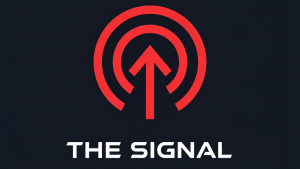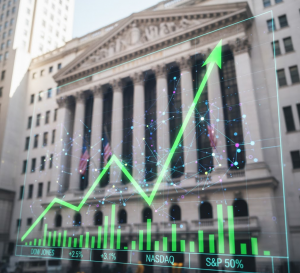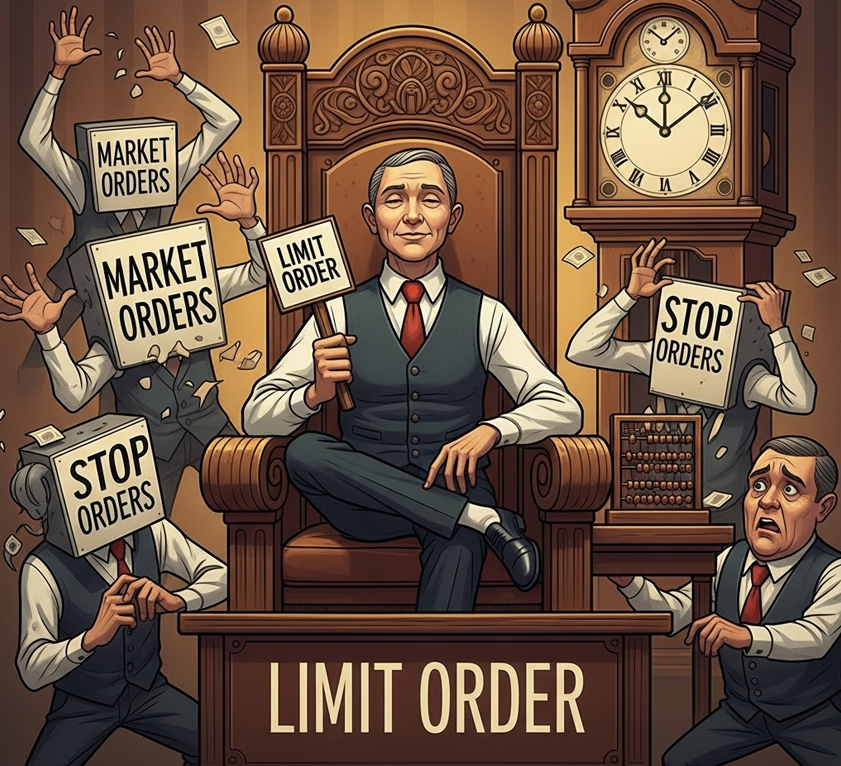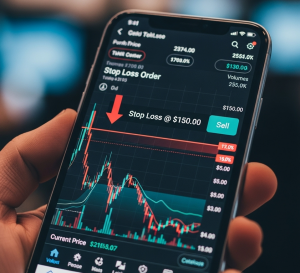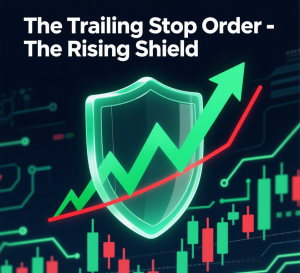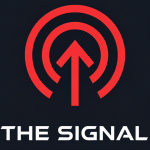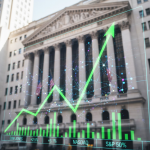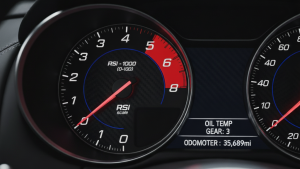The Patient Bidder: A Guide to the Limit Order
Summary TLDR
A limit order is an instruction to your broker to buy or sell a security at a specific price or better. Unlike a market order that prioritizes immediate execution, a limit order prioritizes price, giving you control over how much you pay or receive.
The Core Concept: An Analogy
Imagine you are trying to buy a house that is listed for sale at $500,000. This is the seller’s ask price.
- If you were to use a market order, you would tell the seller, “I’ll take it for $500,000!” You guarantee you get the house immediately, but you have no control over the price beyond what is asked.
- If you use a limit order, you would instead “make an offer.” You say, “My limit is $490,000. I will not pay a penny more.” You have now set your price. The seller can accept your offer, or they can wait for a better one. You have complete control over the price, but you have no guarantee you will get the house.
This is the fundamental trade-off of a limit order: you get to name your price, but you risk the trade never happening if the market doesn’t come to you.
From Theory to Practice
Limit orders are the tools of the patient and price-conscious trader. They work differently for buying and selling.
- Buy Limit Order: This order is placed below the current market price. It is your instruction to buy only if the price drops to your specified level or lower.
- Example: A stock is trading at $50. You think that’s a bit high and want to buy it on a dip. You place a buy limit order at $48.50. Your order will only execute if the ask price of the stock falls to $48.50 or less.
- Sell Limit Order: This order is placed above the current market price. It is often used to take profits at a predetermined target.
- Example: You own a stock that you bought at $50, and your target is to sell it if it reaches $60. You place a sell limit order at $60. Your order will only execute if the bid price of the stock rises to $60 or more.
Why It Matters
- Price Control: A limit order gives you absolute certainty that you will not pay more than you want or sell for less than you want. It is the primary tool for preventing slippage.
- Patience and Discipline: Using limit orders forces a trader to be disciplined about their entry and exit points rather than chasing the market impulsively.
- Execution Risk: The main drawback is that there is no guarantee your order will be filled. If the market moves away from your limit price, you may miss the trading opportunity entirely.
Related Concepts
To fully understand limit orders, you should also explore:
- Trailing Stop Order: An advanced order that automatically moves its stop price up as a stock’s price rises, allowing a trader to lock in profits while still protecting against a reversal.
- Stop-Limit Order: A variation that combines a stop price with a limit price to give the trader control over the execution price, though it does not guarantee the order will be filled.
- Stop-Loss Orders: Understanding the basic version is crucial to grasping the trade-offs of the stop-limit.

